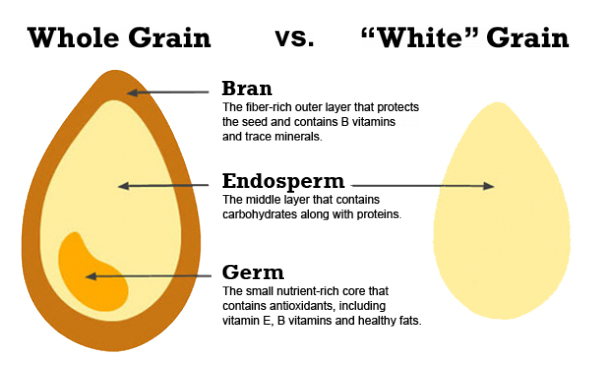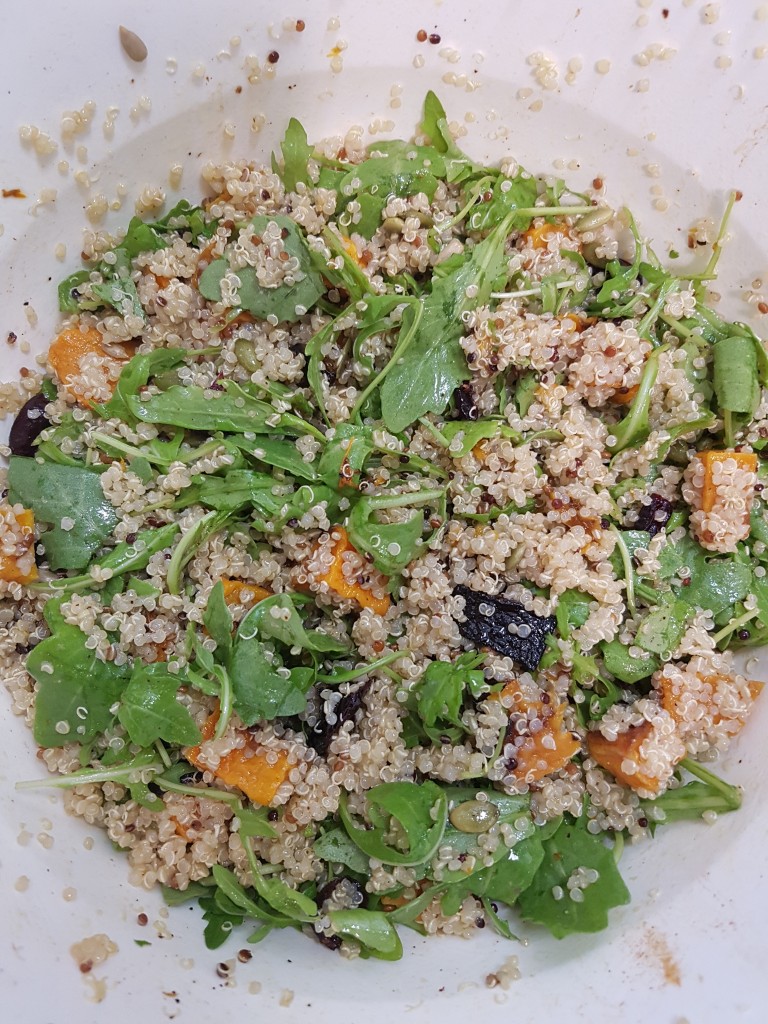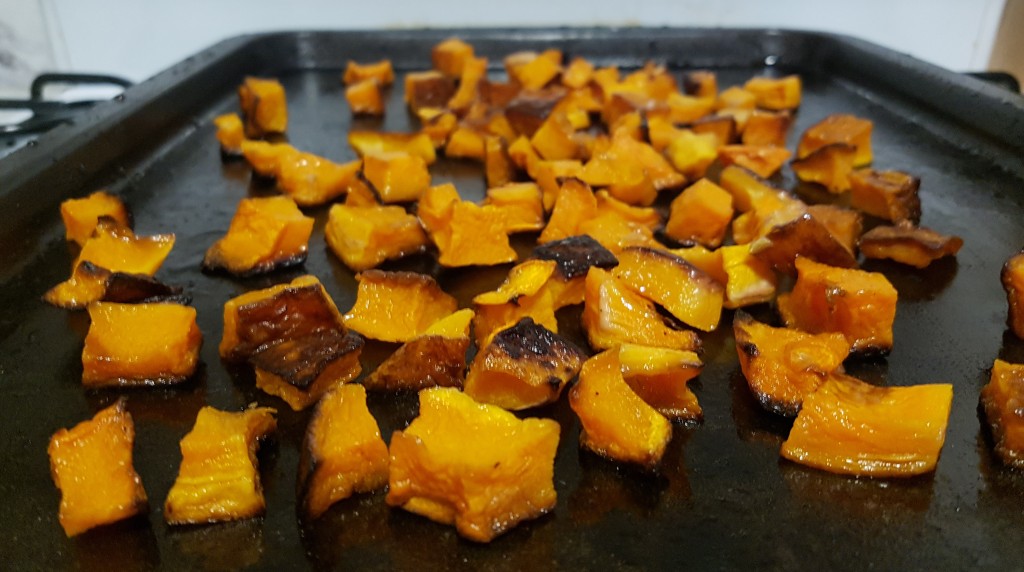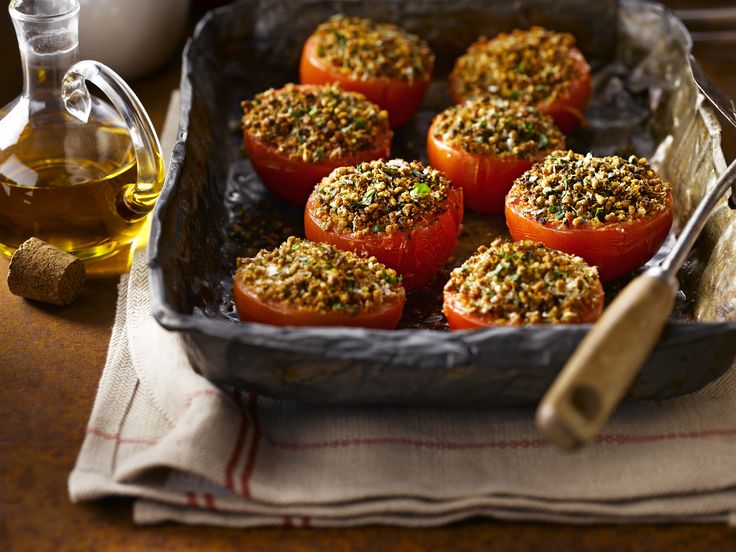Everyone always says “Make sure to eat whole grain”, “Choose whole grains, not refined”, “Whole grain is best”. But why are we always saying to reach for the whole grain options?
To start us off, when we talk about whole grains what does that even mean? A grain is made up of three parts: the bran, the germ, and the endosperm.  Together these three parts of the grain provide us with essential nutrients such as essential B vitamins, healthy fats, protein, fibre, and minerals, which all contribute to a balanced diet. Whereas refined grains are missing part of their structure, which leaves us with a less nutritious option
Together these three parts of the grain provide us with essential nutrients such as essential B vitamins, healthy fats, protein, fibre, and minerals, which all contribute to a balanced diet. Whereas refined grains are missing part of their structure, which leaves us with a less nutritious option
Here are my top 5 reasons why I always keep whole grains stored in my cupboard:
- Energy: Grains provide a great source of energy, without those quick sugar spikes and falls. They will provide you with a more sustained and balanced energy to go about your day.
- Versatility: Grains can be used in anything and everything. Side dishes, breakfast cereals and porridge, salads, soups; you name it and a grain can be incorporated.
- Fibre: This is a super nutrient all on its own. It helps with weight management, appetite control, regulates your digestive tract, and can help prevent diseases like colon cancer, Type 2 Diabetes, and Cardiovascular disease.**More on the benefits of fibre at the bottom
- Vitamins and Minerals: Whole grains are higher in tons of our essential micronutrients and minerals that we need in our daily diet.
- Speed: There are tons of grains that can be made in 15 minutes and under, making them an awesome staple to rely on when you are having a busy week.
Grain salads are my favourite way to incorporate whole grains into my diet. They make great dinners, awesome leftover lunches, and you can incorporate tons of fruits and vegetables into them.
This grain salad uses quinoa, but feel free to experiment with other whole grains such as farro, amaranth or freekeh. 
- Salad
- 1 butternut squash (peeled and cut into ¾ inch cubes)
- 1.5 cups of dry quinoa (cooked as per package instructions)
- 3 cups of packed arugula
- ⅓ cup of dried cranberries (or pomegranates for a lower sugar option)
- ⅓ cup of toasted pumpkin seeds
- ⅓ cup of diced scallions
- ⅓ cup crumbled goats cheese (optional)
- Dressing
- ¼ cup olive oil
- ¼ cup apple cider vinegar
- 1 teaspoon maple syrup
- ½ teaspoon cinnamon
- Pinch of chili powder
- Salt/pepper to taste
- Heat oven to 400 F. Place butternut squash on a baking sheet and drizzle with olive oil. Roast for 30 minutes (turning once half way through) or until golden brown.
- Meanwhile cook quinoa as per package instructions (usually this will be 1:2 ratio of quinoa: water for 15 minutes)
- For dressing add all ingredients to a mason jar and shake away. *
- Once the butternut squash is done roasting, combine all the salad ingredients in a bowl (except for cheese) and let cool in the fridge. **
- When your salad has reached room temperature toss with dressing and season with salt and pepper. Finish off by adding crumbled goats cheese, then you are ready to serve.
**from experience I find most grain salads are best dressed when they are either room temperature or cold.
Further Information can be found:
http://wholegrainscouncil.org/whole-grains-101/whats-whole-grain-refined-grain
http://www.hc-sc.gc.ca/fn-an/nutrition/whole-grain-entiers-eng.php

 Recipe & content developed by UBC nutrition student Kate Stafford
Recipe & content developed by UBC nutrition student Kate Stafford
November is also Diabetes Awareness Month. Fibre and whole grains like quinoa can play an important role in diabetes prevention.
Diabetes presents one of the greatest financial burdens on our health system, estimated to have cost $3 billion to manage, in 2015 alone.[i] What may be surprising is the significant impact that one simple addition to your diet can have to help reduce that burden.
A recent study demonstrated that if Canadian adults consumed one additional gram of cereal fibre per day, the annual healthcare cost savings related to diabetes could total $51.1 million.
The results of the study demand a fresh look at fibre, and how Canadians can increase their consumption.
Did you know?
· Health Canada recommends:
women consume 25 grams of fibre per day men consume 38 grams of fibre per day,[iii]
Canadians are actually consuming about half of these recommended values; men consume approximately 19 grams of fibre per day and women consume 16 grams per day.[iv]
I’m always encouraging my clients to make fibre your friend – look at those labels and go for whole, intact and unprocessed foods wherever possible
This Tomatoes Provencal Recipe makes for another quick and easy way to incorporate more whole grains in the diet.
[i] Canadian Diabetes Association. 2015 Report on Diabetes – Driving Change. Available at: http://www.diabetes.ca/getmedia/5a7070f0-77ad-41ad-9e95-ec1bc56ebf85/2015-report-on-diabetes-driving-change-english.pdf.aspx
[ii] Abdullah MMH, et al. Cost-of-illness analysis reveals potential healthcare savings with reductions in type 2 diabetes and cardiovascular disease following recommended intakes of dietary fiber in Canada. Front. Pharmacol. 2015;6:167. doi: 10.3389/fphar.2015.00167.
[iii] Health Canada. Do Canadian Adults Meet Their Nutrient Requirements Through Food Alone. 2012. ISBN. 978-1-100-20026-2.
[iv] Health Canada, Statistics Canada. Canadian Community Health Survey, Cycle 2.2, Nutrition (2004).
[v] InterAct Consortium. (2015). Dietary fibre and incidence of type 2 diabetes in eight European countries: the EPIC-InterAct Study and a meta-analysis of prospective studies. Diabetologia 58, 1394–408. doi: 10.1007/s00125-015-3585-9.
[vi] Cho SS, et al. Consumption of cereal fiber, mixtures of whole grains and bran, and whole grains and risk reduction in type 2 diabetes, obesity and cardiovascular disease. Am J Clin Nutr 2013;98:594-619. doi: 103945/ajcn.113.067629.
[vii] InterAct Consortium. Dietary fibre and incidence of type 2 diabetes in eight European countries: the EPIC-InterAct Study and a meta-analysis of prospective studies. Diabetologia 2015; 58:1394-1408. doi: 10.1007/s00125-015-3585-9.
[ix] Threapleton DE, et al. Dietary fibre and risk of cardiovascular disease: systematic review and meta-analysis. BMJ 2013;347:f6879. doi:10.1136/bmj.f6879.

Hello! i really liked your post. Please share some more